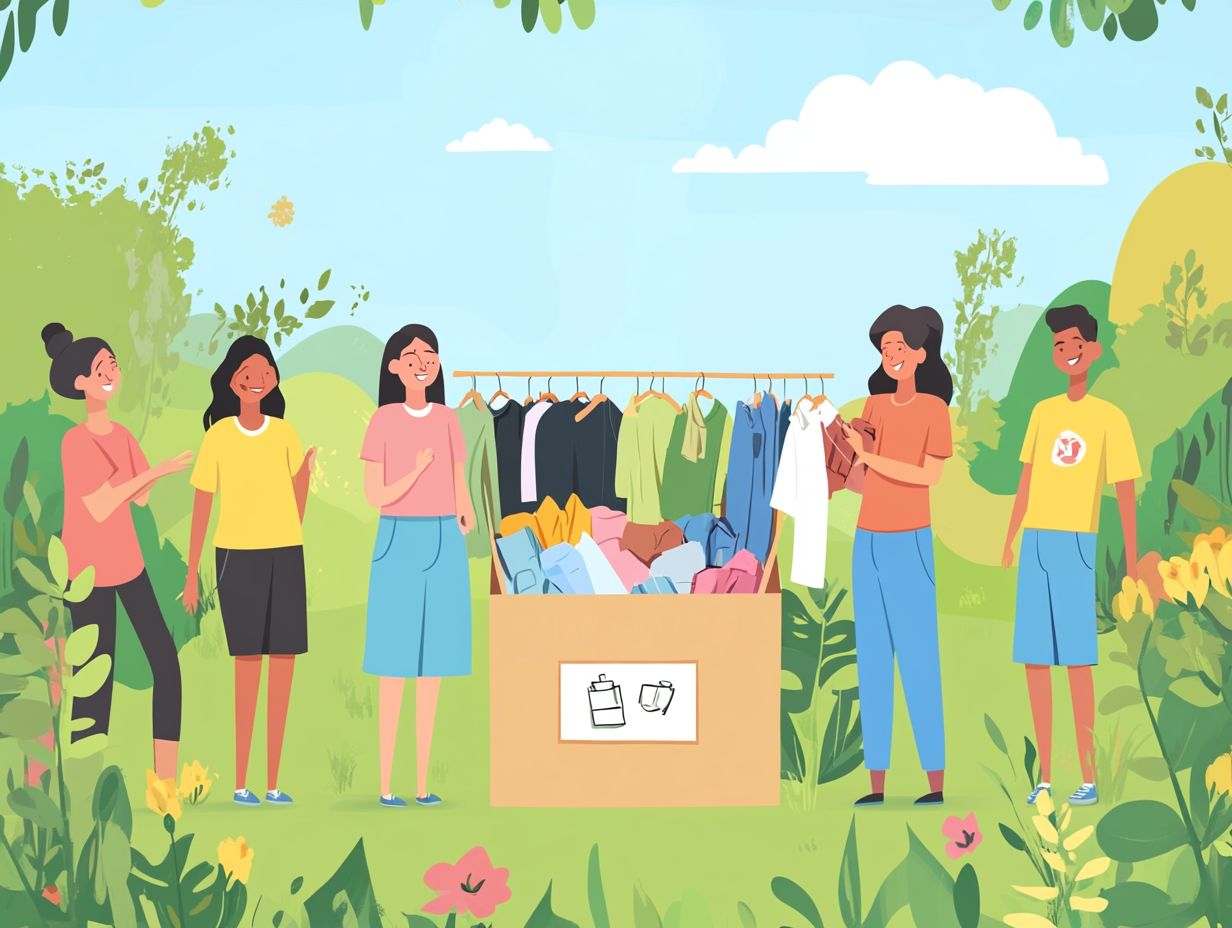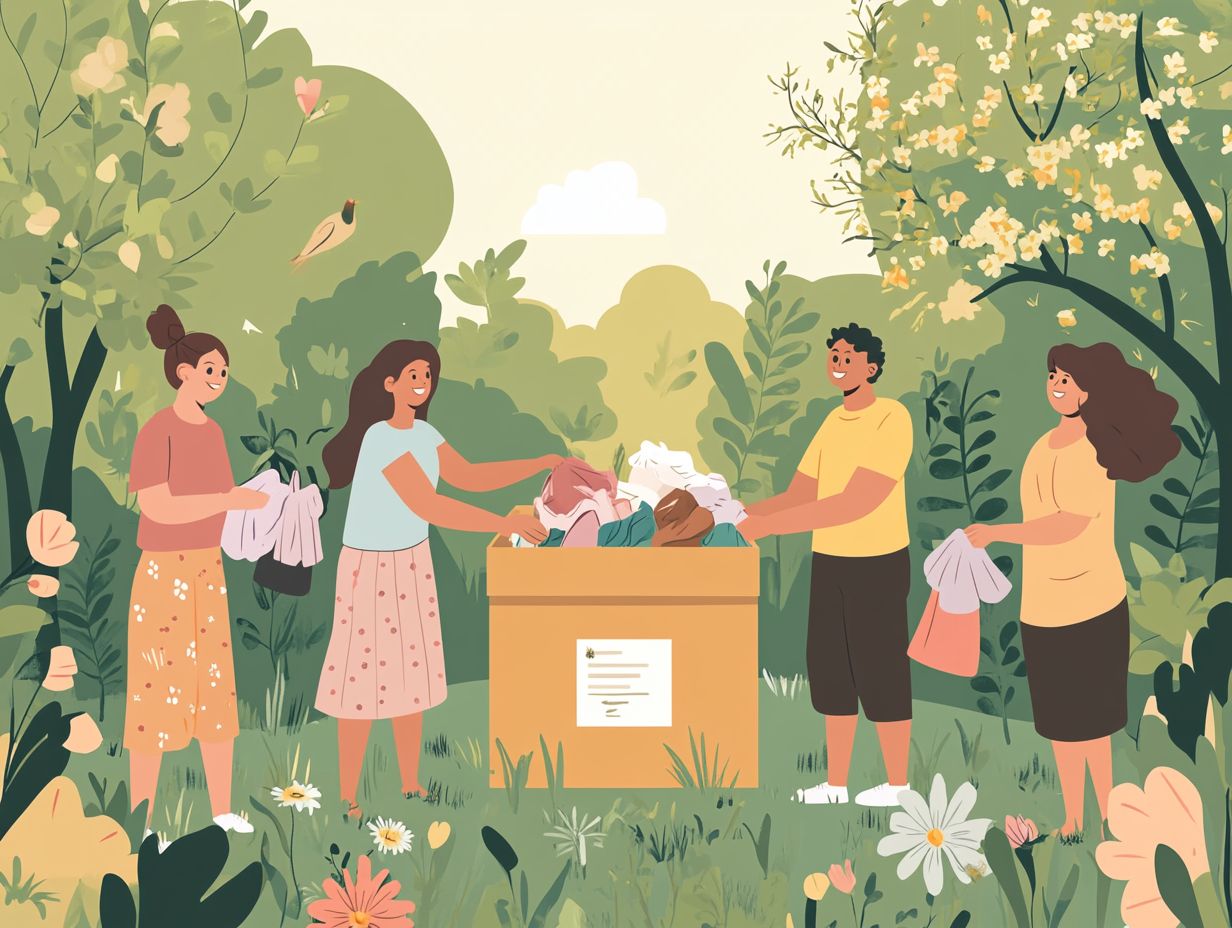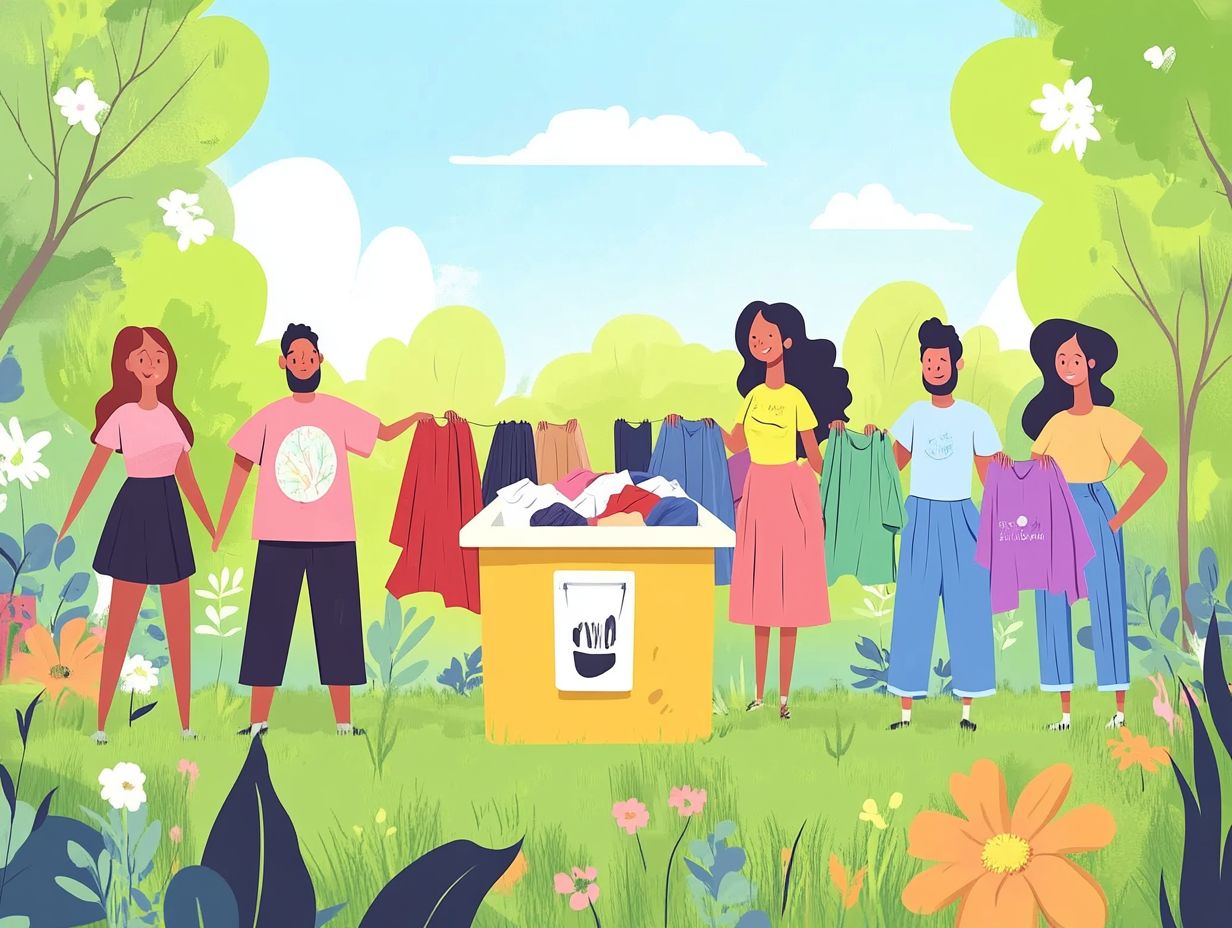The Best Places to Donate Unwanted Clothes
Every year, millions of pounds of unwanted clothing find their way to landfills, harming the environment and squandering valuable resources. This contributes significantly to the growing problem of clothes waste.
When you choose to donate your unwanted clothes, you not only help the planet but also extend a helping hand to local communities in need.
This article explores the positive impact of clothing donations, guiding you to reputable local and national organizations where you can donate your clothing, including Goodwill and Dress for Success. You ll also discover practical tips for preparing your items for donation.
You can also explore other options like selling, trading, or upcycling your clothes.
Join us now to discover exciting ways to give your clothes a second life and make a real difference!
Contents
- Key Takeaways:
- The Impact of Donating Unwanted Clothes
- Where to Donate Clothes
- How to Prepare Clothes for Donation
- Alternative Ways to Donate Clothes
- Frequently Asked Questions
- What are the best places to donate unwanted clothes?
- What should I consider when choosing a place to donate my unwanted clothes?
- Can I donate my unwanted clothes to a specific cause or group?
- Are there any nationwide organizations that accept clothing donations, including those that focus on environmental sustainability?
- Can I donate my unwanted clothes online?
- What should I do with clothes that are ripped or stained?
Key Takeaways:

- Donating unwanted clothes has a positive impact on the environment and community by reducing waste and providing resources for those in need.
- Consider donating to local charities to directly support your community or national and international options to make a global impact.
- Preparing clothes for donation, such as cleaning and sorting, ensures they are in good condition and can be used by those in need.
The Impact of Donating Unwanted Clothes
Donating your unwanted clothes is not just a generous act; it s a vital step in addressing the growing problem of clothes waste. Each year, millions of tons of clothing find their way into landfills, wreaking havoc on the environment.
By engaging in clothing donations, you play a significant role in reducing waste, promoting textile recycling, and supporting community programs focused on environmental sustainability. Organizations like Goodwill and the Salvation Army facilitate this process, making it easy for you to contribute.
Furthermore, donating used clothing fosters sustainability education, inspiring others to reflect on their consumption habits and their impact on our planet.
Benefits for the Environment and Community
The benefits of donating clothes extend far beyond individual generosity; they significantly impact both the environment and community support initiatives.
By participating in clothing donation programs, you help reduce landfill waste, as discarded textiles are major contributors to environmental degradation. Instead of ending up in landfills, your donations often find new life through repurposing or recycling, which helps mitigate harmful emissions and encourages sustainable practices. To learn more about when to make these donations, check out the best time to donate your unwanted clothes.
Organizations like Goodwill and the Salvation Army are dedicated to redistributing donated items, offering job training and community resources along the way. Your contributions bolster local economies and cultivate a culture of recycling and reuse, promoting responsible consumption in the broader community.
Where to Donate Clothes
When you consider donating clothes, you ll find various options available, both locally and nationally, tailored to the unique needs of different communities.
In conclusion, donating clothes not only helps those in need but also benefits the environment. Start today by choosing a local organization where you can make a meaningful contribution and support sustainability.
Local Charities and Organizations

Local charities, like Goodwill and the Salvation Army, make it easy to donate clothes in your community. Dress for Success helps women enter the workforce by providing professional attire.
These organizations help people facing financial challenges by turning donated clothing into vital resources. For instance, Dress for Success boosts women s confidence as they seek job opportunities.
The Salvation Army and Goodwill use clothing donations to support their diverse missions, ranging from job training programs to community development initiatives. Another notable charity, One Warm Coat, provides warm clothing to those in need, ensuring no one has to endure harsh winters without proper attire.
When you donate to these charities, you re changing lives! Your unused clothes can be a lifeline for someone striving for a better future.
National and International Options
If you’re looking to make a significant impact, national and international organizations like One Warm Coat, Planet Aid, and ThredUp offer opportunities to donate clothing that transcend local borders.
These organizations curate clothing donations and effectively distribute items to underserved regions. People in places like Africa, Asia, and South America desperately need the apparel you can provide.
By collaborating with local charities and community groups, they bridge the gap between the surplus of clothing in developed nations and the essential needs of those in developing areas.
These initiatives not only provide immediate relief but also promote ways to help the environment by encouraging the recycling and repurposing of textiles. This plays a crucial role in global fashion sustainability and social responsibility.
How to Prepare Clothes for Donation
Preparing clothes for donation requires you to follow specific cleaning and sorting guidelines. This ensures that the items you no longer need are suitable and ready for those in need, making a positive impact in the community.
Cleaning and Sorting Guidelines
Following proper cleaning and sorting guidelines is crucial when preparing clothes for donation. This ensures each item maintains its highest quality and usability.
Start by examining each piece for any stains or damage that could detract from its appeal. Wash the clothes according to their care labels to preserve the integrity of the fabric. Once cleaned, sort the garments by size, season, and condition.
For example, separate winter coats and sweaters from summer linens to ensure recipients receive the most relevant items. Creating distinct piles for gently used clothing versus those that are too worn out enhances the donation process and makes it easier for organizations to distribute these essentials effectively.
Alternative Ways to Donate Clothes

Along with conventional donation methods, there are many alternative options for donating clothes. You can consider selling, trading, or even upcycling your unwanted garments for some creative reuse.
Each of these avenues supports sustainable practices and adds a unique touch to how you share your clothing with others.
Selling or Trading Clothes
Selling or trading your clothes is a smart way to breathe new life into those unwanted garments while also pocketing some extra cash.
These platforms also offer more than just a chance to declutter your closet; they provide convenient solutions for anyone looking to resell clothing. Apps like ThredUp and Poshmark make it easy to list your secondhand items, connecting you with buyers who value sustainability and unique finds.
With ThredUp, you benefit from a streamlined process that takes care of all the selling details for you. On the other hand, Poshmark creates a vibrant community where you can engage directly with interested shoppers.
By leveraging these platforms, you not only make some money but also play a part in reducing textile waste.
Creative Upcycling Ideas
Discover exciting ways to transform old garments into unique pieces think about turning a worn-out denim jacket into a chic bag or converting old t-shirts into reusable tote bags.
These innovative practices ignite your imagination and make a significant dent in reducing environmental impact by cutting down on textile waste headed for landfills.
Embracing these creative solutions actively joins you in a movement towards ethical consumption, proving that fashion can be both stylish and planet-friendly.
Engaging in upcycling also cultivates a sense of community, as many individuals share ideas and techniques to inspire one another on their sustainable journeys.
Frequently Asked Questions
What are the best places to donate unwanted clothes?

Some of the best places to donate unwanted clothes include local thrift stores, homeless shelters, women’s shelters, and organizations like Dress for Success that support people in need.
What should I consider when choosing a place to donate my unwanted clothes?
When choosing a place to donate your unwanted clothes, consider the organization’s mission, how they distribute donations, how they address the textile waste crisis, and any specific guidelines for donations.
Can I donate my unwanted clothes to a specific cause or group?
Yes, many organizations focus on specific causes and groups, such as donating business attire to women re-entering the workforce or cold-weather clothing to homeless individuals.
Are there any nationwide organizations that accept clothing donations, including those that focus on environmental sustainability?
Yes, several nationwide organizations accept clothing donations, including Goodwill, Salvation Army, and Dress for Success.
Can I donate my unwanted clothes online?
Yes, some organizations and platforms allow you to donate your unwanted clothes online, such as ThredUP and Give Back Box.
What should I do with clothes that are ripped or stained?
If your unwanted clothes are ripped or stained, it’s best to recycle them rather than donate them. Many cities have textile recycling programs, or you can search for a local textile recycling facility.
Take action today! Donate or recycle your clothes and be a part of the solution for a more sustainable fashion future!






